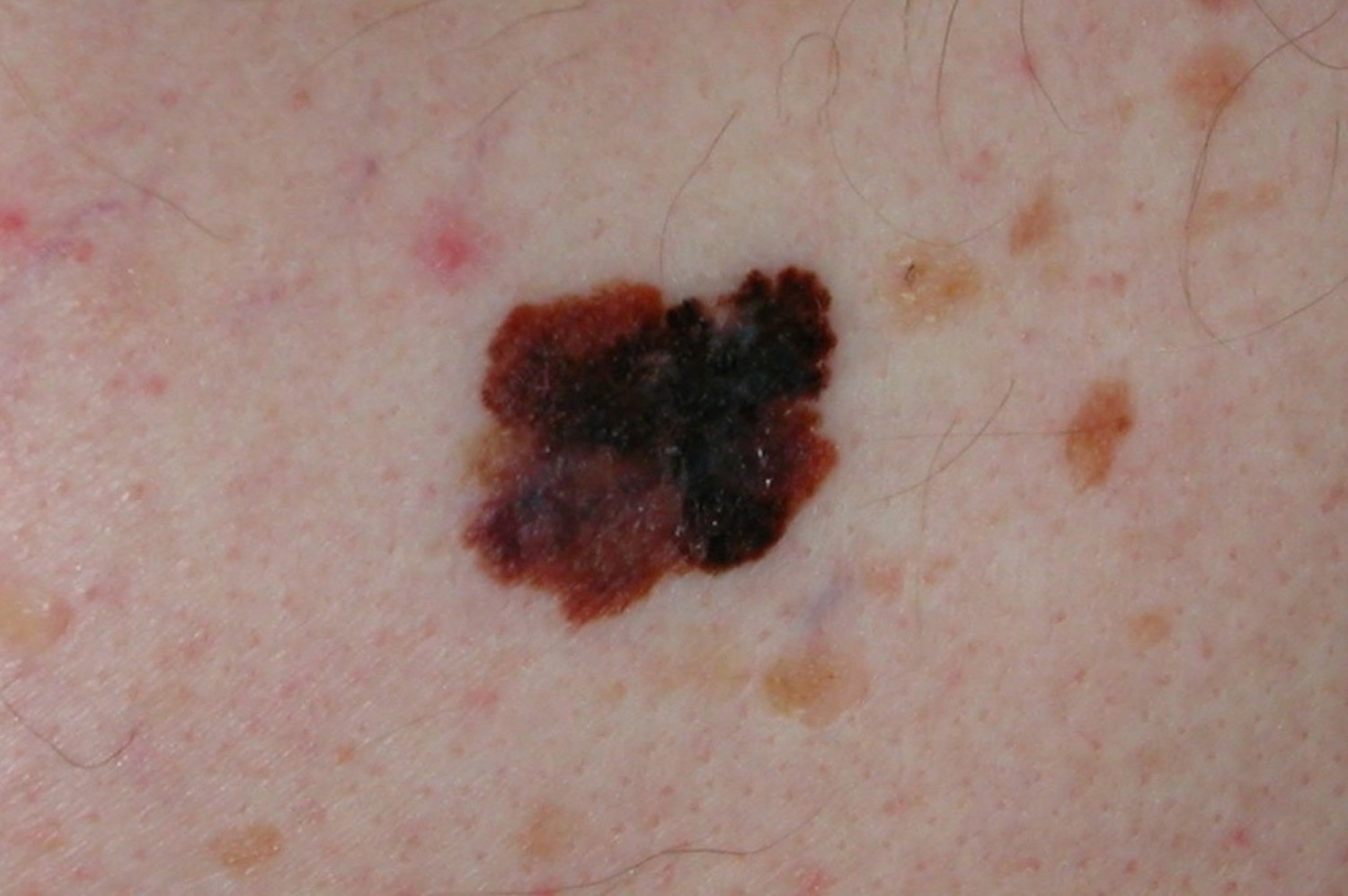Melanoma is the most serious of the skin cancer types because of the possibility of it spreading (metastasis) to other parts of the body.
Because melanoma arises from the pigment producing cells (Melanocytes) in the skin, melanomas are usually pigmented and can present as a changing mole or a new pigmented lesion within previously normal skin. Early detection is extremely important, so we encourage you to check your skin regularly; the earlier the diagnosis, the better the prognosis.
Signs to look out for within a mole:
- Change of colour especially black, blue or white colours
- Change in size
- Change in shape
- Ugly duckling sign (where the mole looks different to other moles and “stands out from the crowd”
Mole mapping can be used to monitor moles and detect any early change of melanoma.

What causes malignant melanoma?
As with all types of cancers there is a genetic element that makes some people more prone to skin cancer development, but it is also a well-established fact that prolonged and excessive exposure to UVB and UVA throughout life increases that risk, e.g. Sunbathing and using tanning beds increases the risk of malignant melanoma.
What are the risk factors for development of melanoma?
- Sunbathing and using tanning salons
- White skin, particularly very pale (celtic/ginger hair) skin
- The presence of multiple moles >50
- Family history of melanoma ( parents/siblings)
- History of previous melanoma
What can I do to minimise my risk of melanoma?
Sun protection with protective clothing and sun block creams is very important particularly during the hot summer months and holidays. Multiple episodes of sunburn especially during childhood can significantly increase the risk of melanoma. We recommend Sun blocks that are broad spectrum, e.g. that they protect against both UVA and UVB and are at least SPF 30 or 50.
Monitoring your skin is very important. You can take photographs of your moles to help you to detect any changes or alternatively, and particularly if you have many moles, you may benefit from mapping your moles with the mole scanner. Click here if you would like to learn more about mole mapping.
Sometimes it is difficult to monitor your skin on your own and we recommend you have your skin checked at least once a year by a Dermatologist. This may be particularly relevant to patients, who have had significant sun exposure over the years, lived in tropical countries, have past history of skin cancer of any type or have large number of moles.
